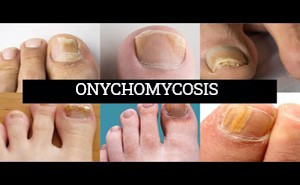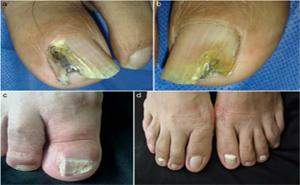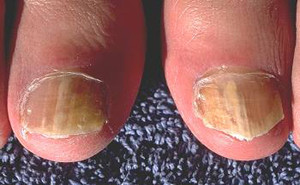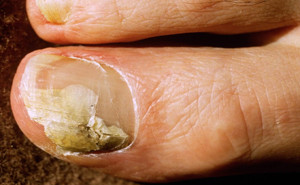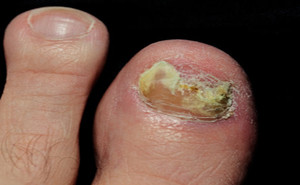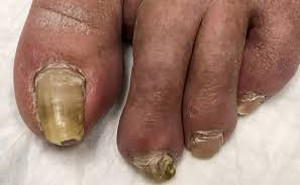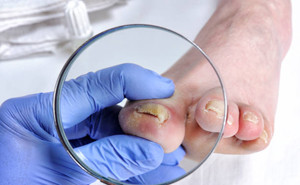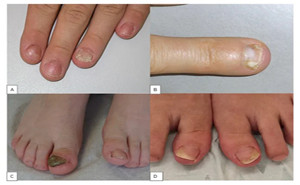Featured
PubMed Central: Published June, 2019Onychomycosis is a fungal infection
occurring in the nails and may affect the adjacent skin. Typically, it
manifests as discoloration of the nail, nail plate thickening, and onycholysis.
It is the most common nail pathology and accounts for about 90% of toenail
infections worldwide.At present, there are sever...
JAMA: The Journal of the American Medical AssociationThe authors investigated different
oral antifungal medications used to treat toenail fungal infections.TAKE-HOME MESSAGECompared
with placebo, high-quality evidence supports better clinical (ie, normal
appearance of the toenail) and mycological (negative culture, microscopy, or
both) results...
Onychomycosis is accounting for up to 50% all nail disorders. It causes not only physical but also psychosocial
and emotional distress to the patient. Treatment of the disease is far from
satisfactory mainly due to high cost and long duration of therapy with poor
patient compliance.TAKE HOME MESSAGE:This
study aims to compare the efficacy of pu...
Importance:
Tinea Unguium (Onychomycosis) is most
often caused by Trichophyton rubrum and T. interdigitale. It should be
distinguished from other causes of onychomycosis:
Candida species, which often cause paronychia,
infection of skin around the nail.
Clinical features:
Tinea unguium is increasingly
prevalent with increas...
Journal of American Medical Associations: JAMA Network
ONYCHOMYCOSIS is a common fungal
disease. This disease is more common in older age groups and in selected
populations, such as swimmers, farmers and individuals with diabetes mellitus
or psoriasis.
Antifungal agents, such as
terbinafine and itraconazole, are significantly more eff...
American Academy of Family Physicians (AAFP) Journal: Published on October 2021Onychomycosis is a chronic fungal
infection of the fingernail or toenail bed leading to brittle, discolored, and
thickened nails. Untreated onychomycosis can cause pain, discomfort, and
physical impairment, negatively impacting quality of life. Onychomycosis should be...
JAMA: The Journal of the American Medical Association: Published
on January, 2018TAKE-HOME MESSAGECLINICAL QUESTIONWhich oral antifungal medication is
associated with the highest clinical (ie, normal appearance of the toenail) and
mycological (negative culture, microscopy, or both) cure rates vs placebo or
other antifungals when used to treat f...
Journal of the European Academy of Dermatology and Venereology (JEADV): Published
on March, 2020Onychomycosis refers to persistent
fungal nail and adjacent skin infection by dermatophyte fungi, non-dermatophyte
fungi or yeast. It is the most common nail disease accounting for 90% of toe
nail infections worldwide.Dermatophytes are the most
freq...
Journal of Drugs in
DermatologyToenail onychomycosis is a common disease in which treatment options
are limited and treatment failures and disease recurrence are frequently
encountered. It usually requires many months of treatment and recurrence
may occur in more than half of the patients within 1 year or more after the
infection has been erad...
Tinea unguium (Onychomycosis) is often
confused with non-infected nail dystrophy due to skin disease, particularly
psoriasis (also, lichen planus).
Onychomycosis may look similar to nail
dystrophy due to psoriasis but those can be differentiated by presence of psoriasis in
the surrounding skin with pitting nail or by circular area of...
Journal of Drugs in Dermatology:
Onychomycosis—a
fungal infection of the nail bed or plate caused by dermatophytes,
non-dermatophyte molds, or yeasts.
Treatment
of onychomycosis is multifactorial and relies predominantly on the severity of
nail disease and patient comorbidities.
Diagnosis:
For diagnosis of onychomycosis,
lo...
